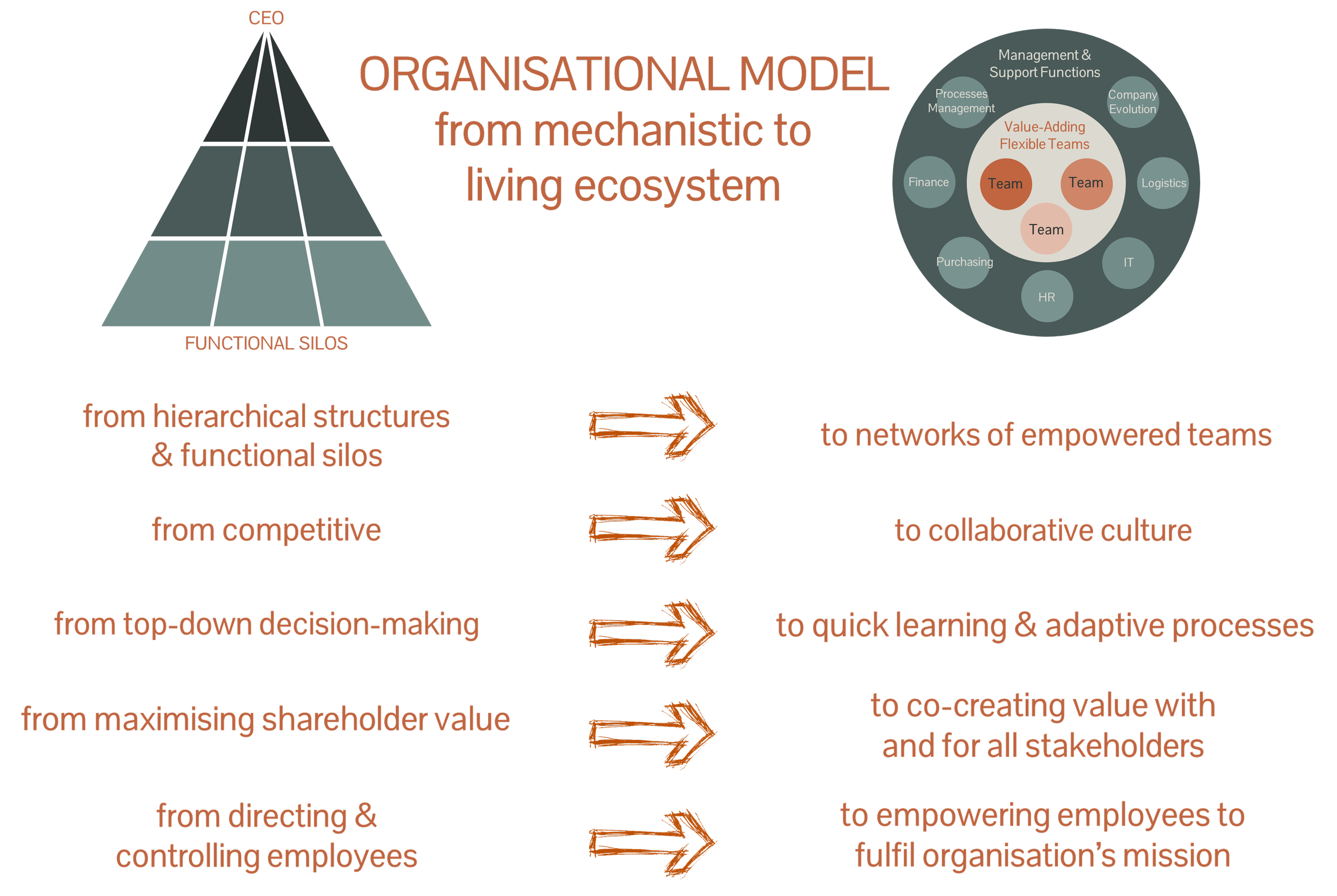adaptive organisation: emergence of a new organisational Form
In today's business landscape, the traditional organisational model is being challenged. Designed for predictable environments, it operates through hierarchical structures, fixed processes, and long-term plans. However, as VUCA becomes the new norm, organisations must adapt to thrive.
adaptive organisation: adding adaptability to stability
Unlike their traditional counterparts, agile organisations embrace dynamism while maintaining a stable backbone. They possess the ability to swiftly reconfigure strategy, structure, or processes to capitalise on new value-creating opportunities. By adding adaptability to stability, they gain a critical competitive advantage in today's VUCA conditions.
towards adaptability: a global perspective
According to the McKinsey Global Survey, rapid change characterises two-thirds of industries worldwide. Consequently, organisations are increasingly prioritising agility. While full-scale agile transformations remain relatively rare, a significant number of companies are in the process of adopting agile practices. Those that have already embraced agility report a marked increase in overall performance. The question remains, how do we build a more agile organisation? Research shows that agility is not a one-size-fits-all solution.
building an adaptive organisation: start with a mindset shift
To embark on the journey towards agility, organisations must assess their current state and identify the specific practices needed to foster agility. However, moving from traditional to more agile organisational models requires fundamental shifts in mindset across various domains:
culture shift
people-centred culture: Instead of relying on competitive strategies and individual incentives, agile organisations foster a culture of cooperation and intrinsic motivation. This encourages collaboration and innovation.
structure shift
networks of empowered teams: Agile organisations replace rigid hierarchies with flexible networks of empowered teams. This allows for faster decision-making and greater responsiveness to change.
management shift
experimentation and learning: Agile organisations prioritise experimentation and quick learning over rigid planning. This allows them to adapt rapidly to changing conditions and seize new opportunities, while moving away from fixed processes and yearly projections.
leadership shift
trust and empowerment: Shifting from top-down control to trust and empowerment recognises that granting autonomy, accountability and decision-making power leads to higher productivity, performance and motivation to achieve the company's mission.
purpose shift
aligned purpose: Rather than focusing solely on shareholder value maximisation, agile organisations align around a deeper, common purpose. This purpose transcends profits and drives meaningful contributions to society.
embracing a new organisational form
The shift towards agility is reshaping the very nature of companies: agile organisations function more like living ecosystems, moving away from rigid, machine-like structures. They sense and respond to changes in their environment, thrive through evolution, and create value in innovative ways. Embracing agility is not just a strategic imperative but a fundamental shift towards a more sustainable and resilient future.


